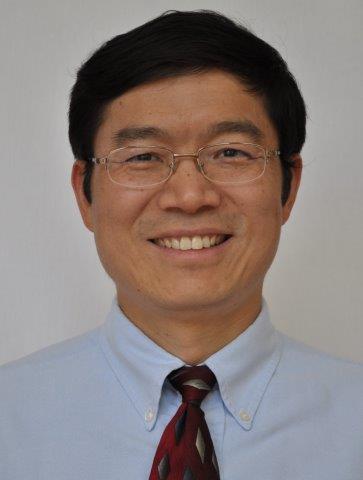Program Information
The Carson/Zagzebski Distinguished Lecture On Medical Ultrasound
L Wang1*, (1) California Institute of Technology, Pasadena, CA
Presentations
8:30 AM : Photoacoustic Tomography: Multi scale Imaging from Organelles to Patients by Ultrasonically Beating Optical Diffusion - L Wang, Presenting AuthorWE-B-708-0 (Wednesday, August 2, 2017) 8:30 AM - 9:30 AM Room: 708
Photoacoustic tomography has been developed for in vivo functional, metabolic, molecular, and histologic imaging by physically combining optical and ultrasonic waves. Broad applications include early-cancer detection and brain imaging. High-resolution optical imaging—such as confocal microscopy, two-photon microscopy, and optical coherence tomography—is limited to superficial imaging within the optical diffusion limit (~1 mm in the skin) of the surface of scattering tissue. By synergistically combining light and sound, photoacoustic tomography provides deep penetration at high ultrasonic resolution and high optical contrast.
In photoacoustic computed tomography, a pulsed broad laser beam illuminates the biological tissue to generate a small but rapid temperature rise, which leads to emission of ultrasonic waves due to thermoelastic expansion. The unscattered pulsed ultrasonic waves are then detected by ultrasonic transducers. High-resolution tomographic images of optical contrast are then formed through image reconstruction. Endogenous optical contrast can be used to quantify the concentration of total hemoglobin, the oxygen saturation of hemoglobin, and the concentration of melanin. Exogenous optical contrast can be used to provide molecular imaging and reporter gene imaging as well as glucose-uptake imaging.
In photoacoustic microscopy, a pulsed laser beam is delivered into the biological tissue to generate ultrasonic waves, which are then detected with a focused ultrasonic transducer to form a depth resolved 1D image. Raster scanning yields 3D high-resolution tomographic images. Super-depths beyond the optical diffusion limit have been reached with high spatial resolution. The following image of a mouse brain was acquired in vivo with intact skull using optical-resolution photoacoustic microscopy.
The annual conference on photoacoustic tomography has become the largest in SPIE’s 20,000-attendee Photonics West since 2010. Wavefront engineering and compressed ultrafast photography will be touched upon.
Learning Objectives:
1. To understand the principles of photoacoustic tomography
2. To understand the pros and cons of photoacoustic tomography
3. To understand the potential applications of photoacoustic tomography
Handouts
Contact Email:

